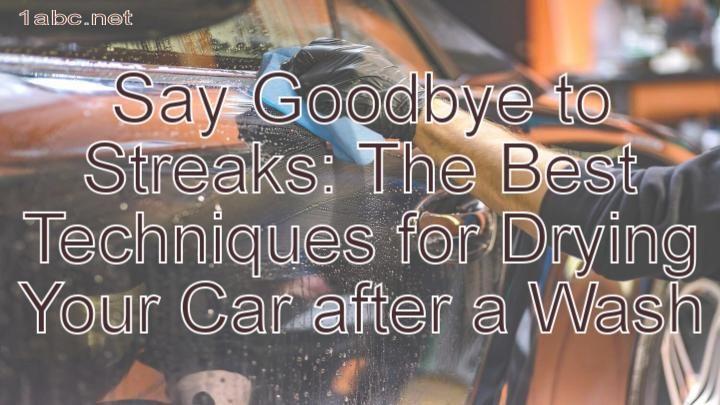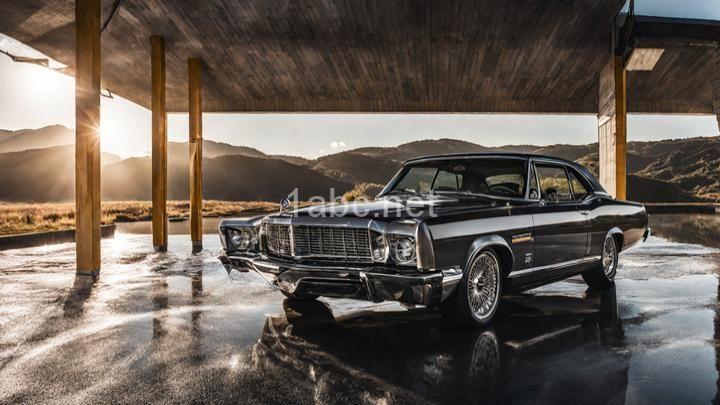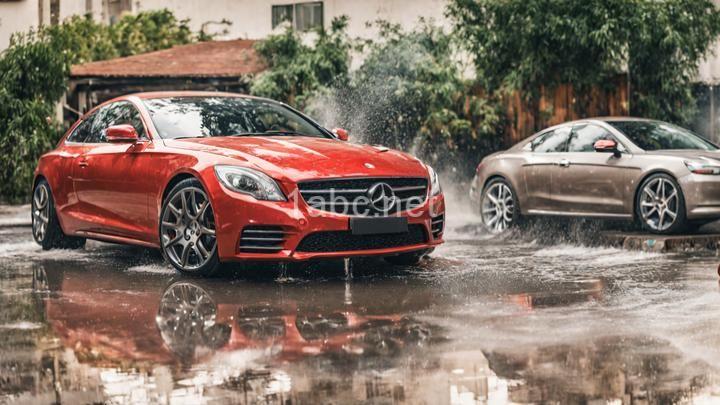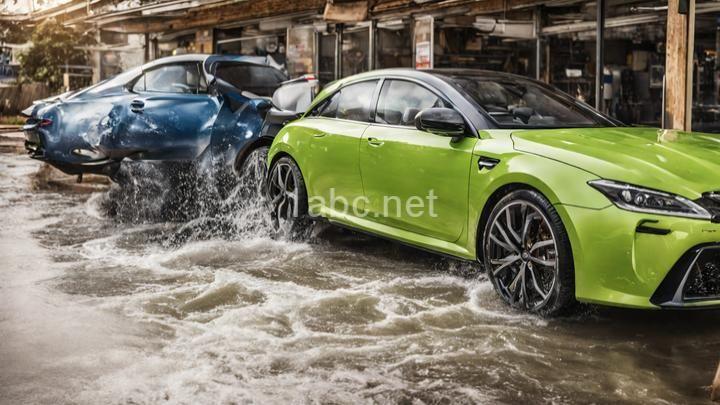Say Goodbye to Streaks: The Best Techniques for Drying Your Car after a Wash
Introduction:
I. Gather Your Supplies:
II. Start with the Right Technique:
III. Towel Drying Tips:
1. Use High-Quality Microfiber Towels:
2. Begin from Top to Bottom:
3. Pat Dry Instead of Rubbing:
IV. Drying Aid Options:
1. Quick Detailing Sprays:
2. Water Repellent Coatings:
V. Squeegees for Quick Results:
VI. Additional Tips for a Streak-Free Finish:
1. Avoid Direct Sunlight:
2. Check Hard-to-Reach Areas:
Conclusion:

Introduction:
Hello readers and car enthusiasts! Welcome to our blog where we will be discussing the best techniques for drying your car after a wash. We understand the pride and joy that comes with owning a shiny and clean car, and we also know how frustrating it can be to see streaks and water spots ruining that perfect finish. That's why we're here to help you say goodbye to streaks and achieve a showroom-worthy finish every time you wash your car.
Drying your car properly after a wash is essential to avoid streaks and water spots. Leaving your car to air dry may seem like the easiest option, but it often leads to water spots and can take longer. So, let's dive into the best techniques and tips for drying your car effectively.
I. Gather Your Supplies:
Before we get started, let's make sure you have all the necessary supplies for drying your car. The most important supply is a high-quality microfiber towel. Microfiber towels are designed to absorb water without scratching your car's paint. Make sure to invest in a few good ones as they will be your best friend in achieving a streak-free finish.
Additionally, you may want to consider using drying aids such as quick detailing sprays or water repellent coatings. These products not only speed up the drying process but also provide added benefits such as lubrication and enhanced shine. Lastly, if you have large windows or surfaces, a squeegee can be a great tool to have for quick and efficient drying.
If you don't already have these supplies, you can easily find them at your local auto parts store or online. Now that you have everything you need, let's move on to the techniques.
II. Start with the Right Technique:
There are two common techniques for drying your car: towel drying and air drying. Both have their pros and cons, but one technique stands out when it comes to avoiding streaks - towel drying.
Towel drying allows you to control the drying process and ensure that every surface is thoroughly dried. On the other hand, air drying can lead to water spots if the water is left to evaporate on its own.
III. Towel Drying Tips:
1. Use High-Quality Microfiber Towels:
When it comes to drying your car, using high-quality microfiber towels is crucial. These towels are designed to absorb water effectively without scratching your car's paint. Avoid using regular towels or cotton cloths as they can leave lint or scratches on your car's surface.
Invest in multiple microfiber towels so that you can switch them out as they become saturated. This will prevent you from spreading dirt or debris onto already dried areas.
2. Begin from Top to Bottom:
To prevent water from dripping onto already dried areas, it is important to start drying your car from the top and work your way down. Begin with the roof, then move to the windows, hood, trunk, and finally the sides. This technique ensures that you don't have to redo any areas that have been affected by dripping water.
3. Pat Dry Instead of Rubbing:
When drying your car, it is important to pat the surface gently instead of rubbing vigorously. Rubbing can create swirl marks and potentially damage your car's paint. Patting helps to absorb the water without causing any harm. Take your time and be gentle, especially on sensitive surfaces.
IV. Drying Aid Options:
If you want to speed up the drying process and enhance the shine of your car, there are a couple of drying aid options you can consider.
1. Quick Detailing Sprays:
Quick detailing sprays are a great option as they provide lubrication while enhancing shine. Simply spray the detailing spray onto your microfiber towel and then apply it to the car's surface. This will not only help in drying but also leave your car looking glossy and well-maintained.
2. Water Repellent Coatings:
Water repellent coatings are another option to consider. These coatings create a hydrophobic barrier on your car's surface, causing water to bead and slide off easily. This not only reduces drying time but also helps in preventing water spots. However, keep in mind that water repellent coatings require proper application and periodic reapplication to maintain their effectiveness.
V. Squeegees for Quick Results:
If you have large surfaces like windows or a truck bed, using a squeegee can be a game-changer. A squeegee allows you to quickly remove excess water from these areas, significantly reducing drying time. Make sure to choose a squeegee with a soft rubber blade to avoid scratching your car's surface. Use it in a sweeping motion to remove the water efficiently.
VI. Additional Tips for a Streak-Free Finish:
1. Avoid Direct Sunlight:
When drying your car, it is best to avoid direct sunlight. The heat from the sun can cause water to evaporate quickly, leaving behind water spots. If possible, dry your car in shaded areas or during cooler times of the day to prevent water spots caused by rapid evaporation.
2. Check Hard-to-Reach Areas:
Don't forget to pay attention to hard-to-reach areas that tend to retain water, such as crevices, emblems, and door handles. Use compressed air or specialized drying tools to remove water from these areas. By ensuring that every nook and cranny is thoroughly dried, you can achieve a streak-free finish.
Conclusion:
Drying your car properly is essential to avoid streaks and water spots. By following the techniques and tips outlined in this blog, you can achieve a showroom-worthy finish every time you wash your car. Remember to use high-quality microfiber towels, start from the top and work your way down, and pat dry instead of rubbing. Consider using drying aids such as quick detailing sprays or water repellent coatings, and use a squeegee for quick results on large surfaces. Lastly, don't forget to check hard-to-reach areas and avoid direct sunlight.
We hope this blog has provided you with valuable insights and techniques to say goodbye to streaks and achieve a flawless finish. Happy car washing!
FREQUENTLY ASKED QUESTIONS
What is the importance of drying my car after a wash?
Drying your car after a wash is important for a few reasons:
- Preventing water spots: Water contains minerals that can leave behind unsightly spots on your car's paint if allowed to air dry. By drying your car, you can prevent these water spots from forming.
- Protecting the paint: Leaving your car wet for an extended period can promote the growth of mold, mildew, and other contaminants. Drying your car helps remove excess moisture and prevents these substances from damaging your car's paint job.
- Avoiding streaks: Allowing your car to air dry can leave streaks on the surface, which can make your car's appearance less than desirable. Drying with a clean cloth or a microfiber towel helps ensure a streak-free finish.
- Keeping it looking shiny: By drying your car, you can enhance its overall shine and bring out its full beauty. Water droplets can interfere with the reflective properties of your car's paint, so drying it will help maintain that glossy finish.
Remember to use a soft, absorbent cloth or a microfiber towel to dry your car gently. This will minimize the risk of scratches or swirl marks that may occur with more abrasive materials.
What causes streaks on a car's surface after washing?
Streaks on a car's surface after washing can be caused by various factors. Here are a few common causes:
- Residue from soap or detergent: If soap or detergent is not rinsed off completely, it can leave behind streaks on the car's surface. Ensure thorough rinsing to prevent this.
- Hard water minerals: Hard water, which contains minerals like calcium and magnesium, can leave behind streaks when it evaporates on the car's surface. Using a water softener or a water filter can help mitigate this issue.
- Dirty or contaminated cleaning tools: If the sponge or wash mitt used to clean the car is dirty or contaminated with debris, it can transfer these particles to the car's surface, causing streaks. Use clean and soft cleaning tools.
- Incorrect drying technique: Improper drying can leave water droplets on the car's surface, which can dry and form streaks. Use a microfiber cloth or chamois to gently dry the car, ensuring all water is removed.
To minimize streaking, use high-quality car wash products, ensure proper rinsing, and adopt effective drying techniques.
What are the best techniques for drying a car without leaving streaks?
To dry a car without leaving streaks, here are some best techniques you can try:
- Use a microfiber drying towel: Microfiber towels are absorbent and gentle on the car's surface. They effectively soak up water and reduce the chances of streaks.
- Start from the top: Begin drying from the roof and work your way down to the sides and finally the bottom of the car. This helps prevent water dripping down and causing streaks on the previously dried areas.
- Use a blotting or patting motion: Instead of dragging the towel across the surface, lightly blot or pat the wet areas. This technique prevents friction and reduces the risk of streaking.
- Change towels when needed: If the towel becomes too saturated with water, replace it with a dry one. Using a towel that is already wet can leave streaks or introduce water spots.
- Avoid drying in direct sunlight: Drying your car in direct sunlight can lead to water evaporating too quickly, leaving behind mineral deposits that cause streaks. Try to find a shaded area for drying.
- Consider using a detailing spray: Some specially formulated drying aids or quick detail sprays can help lubricate the surface and minimize streaking. Spray a small amount onto the towel before drying.
Remember, practicing these techniques with care and using quality products will give you the best chance of achieving a streak-free finish.
Can I use a regular towel to dry my car?
Using a regular towel to dry your car is not recommended. Regular towels, such as bath towels or kitchen towels, are not designed to be efficient at absorbing large amounts of water or being gentle on car surfaces. Using a regular towel may potentially leave behind lint, scratch the paint surface, or even cause swirl marks.
It is recommended to use a microfiber towel specifically designed for drying cars. Microfiber towels have high-absorbency and soft fibers that are safe for your car's paintwork. They help to minimize the risk of scratches or swirl marks while effectively drying your vehicle.
If you do not have a microfiber towel, an alternative option is to use a synthetic chamois or a proper car drying cloth. These are specifically designed for drying cars and are also gentle on surfaces.
Regardless of the drying method you choose, it's important to ensure that your car's surface is clean and free of debris before drying to minimize the risk of scratching.
Are there any specific products or tools I should use for drying my car?
When it comes to drying your car, there are several products and tools that can help you achieve the best results. Here are some options to consider:
- Microfiber towels: These towels are highly recommended for drying your car as they are super absorbent and gentle on the paint. Look for ones with a high GSM (grams per square meter) rating for better absorption.
- Drying towels: Similar to microfiber towels, drying towels are specifically designed to soak up water from your car's surface quickly. They often have a larger size and may have waffle-like patterns for enhanced absorbency.
- Air blowers: Using an air blower can be an effective way to remove water from hard-to-reach areas like grilles, mirrors, and emblems. This tool can speed up the drying process and reduce the risk of water spots.
- Waterless car wash sprays: These sprays are designed to clean and protect your car's surface without the need for water. They often contain lubricants that help encapsulate dirt and prevent scratching while also aiding in drying.
- Detailing sprays: Detailing sprays can be used in the drying process to enhance gloss and provide additional protection. They are usually applied with a microfiber towel and can help remove any remaining water droplets.
- Leaf blowers: If you already have a leaf blower at home, you can use it as an alternative to an air blower for drying your car. Just make sure to clean the blower beforehand to avoid blowing any debris onto your vehicle.
Remember, it's important to use clean and well-maintained tools to avoid scratching or damaging your car's paint. Additionally, be mindful of the amount of pressure you apply while drying to avoid any potential swirl marks.
How often should I dry my car after washing?
After washing your car, it is recommended to dry it thoroughly to avoid water spots and potential damage to the paintwork. The frequency of drying your car depends on various factors such as the climate, quality of water, and the time of day you wash it. Here are some general guidelines:
- Wash in shaded or cool areas: If possible, wash your car in a shaded or cool area to minimize the risk of water evaporating quickly and leaving behind water spots.
- Use a microfiber towel: Microfiber towels are highly absorbent and help to prevent scratches on the paint surface. Pat dry your car using a clean microfiber towel after rinsing off the soap.
- Dry immediately on a hot day: In hot and sunny weather, it is crucial to dry your car immediately after washing. Sunlight can quickly dry the water and leave behind water spots. Consider dividing your car into sections and drying each section promptly.
- Avoid air drying: Leaving your car to air dry can result in water spots as the water evaporates. It is best to manually dry it to ensure a spot-free finish.
Every time you wash your car, make sure to give it a thorough drying to maintain its appearance and protect the paintwork.




